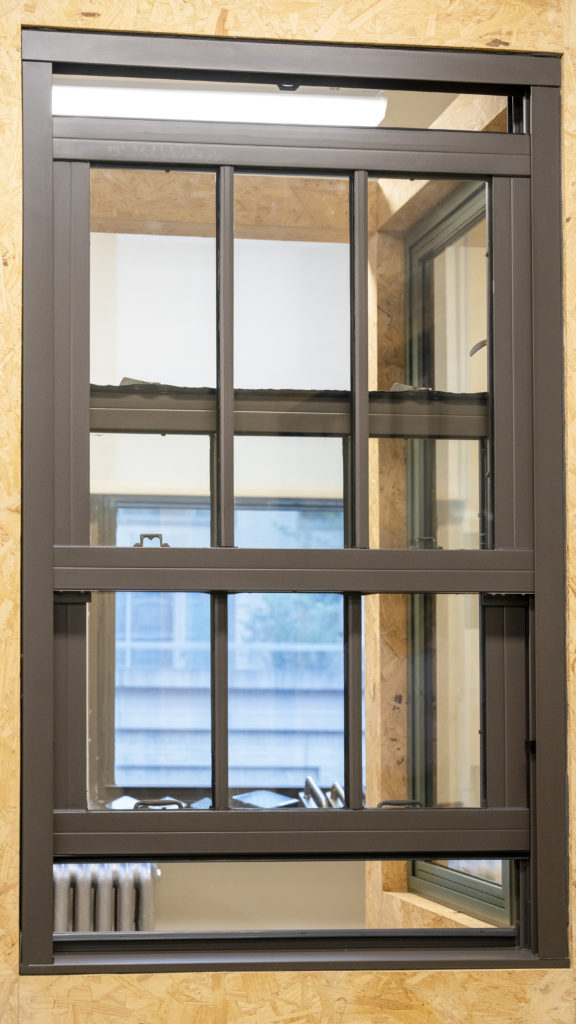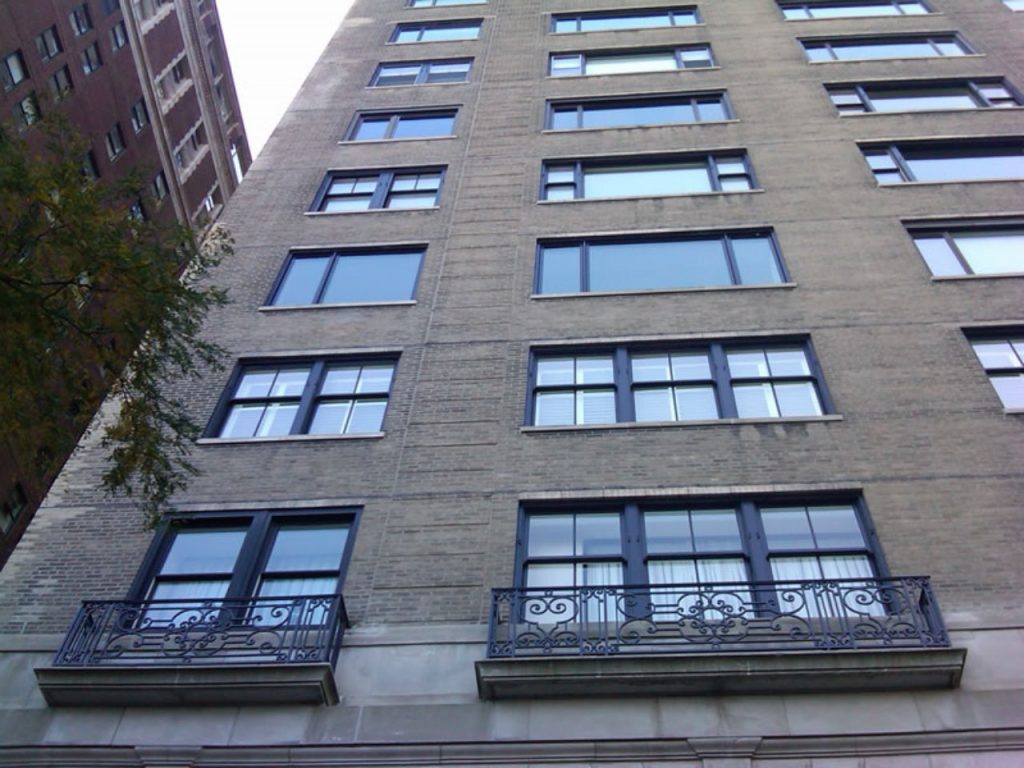In the world of architectural design and construction, the safety and protection of building occupants in the event of a fire are paramount.
Fire-rated windows play a crucial role in this aspect, offering not just a barrier against flames and smoke but also providing essential egress paths and preserving the integrity of fire barriers.
As architects, understanding the nuances of fire-rated glazing technologies, materials, and standards is essential for integrating these critical components effectively into your projects.
This article delves into what makes a window fire-rated, exploring the materials, design considerations, and regulatory standards that govern their use.
Fire-rated windows are specialized products designed to withstand extreme heat and prevent the spread of fire and smoke for a specified period. These windows are an integral part of a building’s passive fire protection system, providing fire resistance while still fulfilling the functional and aesthetic requirements of modern architecture.
They are constructed from materials such as fire-rated glass, frames, and seals that have been tested to withstand fire conditions, adhering to strict test standards like ASTM E119 and IBC (International Building Code) requirements.
The distinction between fire-protective and fire-resistive glazing is crucial in the context of fire-rated windows. Fire-protective glass is designed to prevent the spread of flames and smoke while fire-resistive glass also offers protection against radiant heat, a critical factor in ensuring the safety of occupants and preventing fire from spreading to adjacent areas.
This differentiation is not just a matter of terminology but impacts the selection of appropriate glazing for different areas of a building, such as stairwells, exit corridors, and exterior walls.
Choosing the right type of fire-rated window involves considering several factors, including the fire rating (the amount of time the window can withstand fire conditions), the type of glass (such as tempered glass, glass ceramic, or fire-resistive glazing products), and the frame material.
Additionally, architects must navigate a complex landscape of building codes, fire test standards, and occupant safety requirements to ensure that their designs not only enhance the aesthetic appeal of a building but also provide robust fire protection.
Let’s explore the critical aspects of fire-rated windows, including their construction, performance criteria, and application in architectural design, to provide a solid foundation for incorporating these essential elements into your next project.

Materials and Construction of Fire-Rated Windows
Understanding Fire-Rated Glass
Fire-rated glass is at the heart of fire-rated windows, designed to withstand extreme heat and prevent the spread of flames and radiant heat for a specified period. The two primary types of fire-rated glass are fire-protective and fire-resistive, each serving different levels of protection based on their composition and manufacturing process.
- Fire-Protective Glass: This type includes wired glass and glass ceramic. Wired glass, once the standard for fire-rated applications, contains metal wire mesh embedded within, offering flame and smoke protection. Glass ceramic, on the other hand, appears similar to ordinary glass but transitions to an opaque state when exposed to fire, effectively blocking flames and smoke while remaining intact under extreme temperatures.
- Fire-Resistive Glass: Made from multi-layered glass and interlayers, this type can withstand fire without the transmission of radiant heat, making it ideal for applications where heat transfer could endanger occupants or ignite materials on the non-fire side. Fire-resistive glazing can maintain its integrity and insulation properties for a longer duration, typically ranging from 20 minutes to three hours.
Frame Materials and Construction
The frame of a fire-rated window is just as crucial as the glass. It must also withstand the same fire conditions without losing structural integrity. Common materials include:
- Steel: Highly favored for its strength and fire resistance, steel frames are commonly used in fire-rated windows.
- Aluminum: When treated with fire-resistant fillers, aluminum frames can also be used in certain fire-rated applications.
The construction of the frame, including the use of intumescent seals, ensures the window assembly remains intact, preventing the passage of flames and smoke and limiting radiant heat transfer.
Seals and Gaskets
Seals and gaskets play a vital role in the performance of fire-rated windows. Intumescent materials, which expand when exposed to heat, are used to seal gaps between the glass and frame, enhancing the window’s ability to block fire and smoke.

Performance Criteria and Testing Standards
Fire Rating Classification
Fire-rated windows are classified based on their ability to withstand fire for a specific period, typically ranging from 20 minutes to three hours. This classification is determined through rigorous testing according to standards such as ASTM E119 and the International Building Code (IBC).
Testing Standards
- ASTM E119: This standard assesses the window’s ability to prevent the spread of fire, smoke, and radiant heat. It involves exposing the window to a controlled fire, measuring temperature on the non-fire side, and evaluating structural integrity.
- UL (Underwriters Laboratories): UL testing includes evaluating the window’s resistance to fire, heat, and pressure, ensuring it meets specified safety standards.
Regulatory Standards and Building Codes
IBC Requirements
The International Building Code (IBC) sets forth requirements for the use of fire-rated windows, specifying where they must be used (such as in fire barriers, fire walls, and exit enclosures) and their minimum fire rating based on the building’s design and use.
Local Building Codes
Architects must also be familiar with local building codes, which can vary and may impose additional requirements on the use of fire-rated windows to ensure the safety of building occupants.
Design Considerations for Architects
Aesthetic Integration
While fire-rated windows are primarily functional, modern advancements have made it possible to integrate them seamlessly into architectural designs without compromising aesthetic values. Options include frameless designs and custom shapes, allowing architects to maintain visual consistency across both fire-rated and non-fire-rated glazing.
Strategic Placement
The placement of fire-rated windows is critical in maximizing natural light while ensuring occupant safety and compliance with egress requirements. Strategic placement can enhance the building’s overall design and functionality, providing safe, illuminated escape routes and reducing the reliance on artificial lighting.
Balancing Safety with Design
Architects face the challenge of balancing safety requirements with design objectives. By understanding the properties and capabilities of fire-rated windows, architects can make informed decisions that enhance both the safety and aesthetic appeal of their projects.
Conclusion
Fire-rated windows are a critical component of modern building design, offering essential protection against the spread of fire and smoke while contributing to the aesthetic and functional requirements of architectural projects. By understanding the materials, performance criteria, regulatory standards, and design considerations associated with fire-rated windows, architects can ensure their projects not only meet safety standards but also achieve their vision for the built environment.
As we continue to push the boundaries of design and construction, the integration of advanced fire-rated glazing technologies will remain a key factor in creating safe, beautiful, and sustainable buildings. Whether designing a new building or retrofitting an existing structure, the thoughtful selection and application of fire-rated windows can significantly impact the safety, functionality, and overall success of a project.



